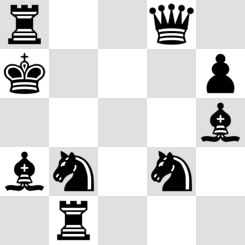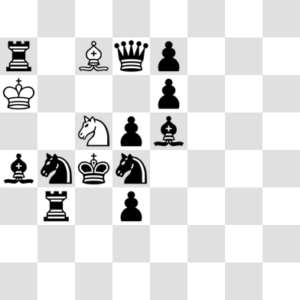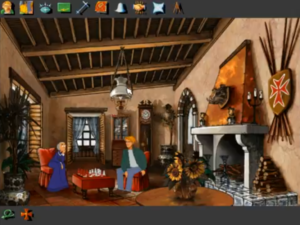One upon a time, there were point-and-click adventure games. Sure, the genre still exists, but in the late eighties and the early nineties, when home computers became somewhat common, point-and-click adventure games were one of the most popular genres, probably because they don’t need advanced graphics or intricate control schemes. Many of the most acclaimed titles in the genre unsurprisingly stem from this time: the King’s Quest series, The secret of Monkey Island, The day of the tentacle, and so on. With its 1996 release, Broken sword: the shadow of the Templars came after the heyday of the point-and-clicker and perhaps it can be seen as the last big commercial success in its category.1
Let me first say a word or two, or possibly three, about the plot. It’s surprisingly decent. Hm. Perhaps it deserves a few phrases more. It seems to be influenced quite a bit by Eco’s Il pendolo di Foucault: it is about a big conspiracy featuring the Knights Templar centred in Paris and highly entertaining, if a tad improbable. Perhaps not surprisingly, chess turns up at some point. At several points even! First, there is the picture above in which the position can’t be made out with any kind of accuracy. As there is enough material elsewhere, I’ll leave this be.
Not much later, there is a chess-related puzzle. It is on a 5×5 board with pieces that seem to be based on the Lewis chessmen. The position is the following:2
 Three white pieces, a king, a knight, and a bishop, have to be arranged on the c-file. It is not mentioned explicitly, but the idea is to do it in such a way that the black king is checkmated but white is not in check. Once one realises this, the solution is obvious: the king should be on c2, the knight on c3, and the bishop on c5.
Three white pieces, a king, a knight, and a bishop, have to be arranged on the c-file. It is not mentioned explicitly, but the idea is to do it in such a way that the black king is checkmated but white is not in check. Once one realises this, the solution is obvious: the king should be on c2, the knight on c3, and the bishop on c5.
Still later on, our hero walks past an old, unravelling tapestry on which the following position is shown:
 with the caveat that the lower two ranks of the tapestry are mostly eaten up by Old Father Time, possibly with the help of some moths.3
with the caveat that the lower two ranks of the tapestry are mostly eaten up by Old Father Time, possibly with the help of some moths.3
This seems an obvious but incompetent callback to the previous position. If you cut out the square a3-e3-e7-a7 you almost get it back, but the two kings changed places and three extra pawns have appeared. Of course, this nullifies the symbolic value of the hugely outnumbered white forces beating the odds and delivering checkmate. Even if the kings change places again it doesn’t work, because then white would be in check, too.
How did this straightforward symbolism get so jumbled up so badly?Who sabotaged this simple concept? There must be some conspiracy here.
Realism: -/5 & 2/5 The first position is not even illegal, as it features a 5×5 board. The second one is more realistic, but not by much. By all rights, white should have resigned long time ago — probably around the time the Templars were founded — and the distribution of black pawns is less likely than the game’s plot.
Probable winner: In the first position white, in the second one black.
1. [And perhaps it can’t. I do chess history, not gaming history.] ↩
2. [It’d suggest this for exTemplary diagrams.] ↩
3. [Or rather their caterpillars. Is it reasonable to call those ‘moths’, too? We consider calves to be cows, too, after all. Still, it sounds very weird to me.] ↩
